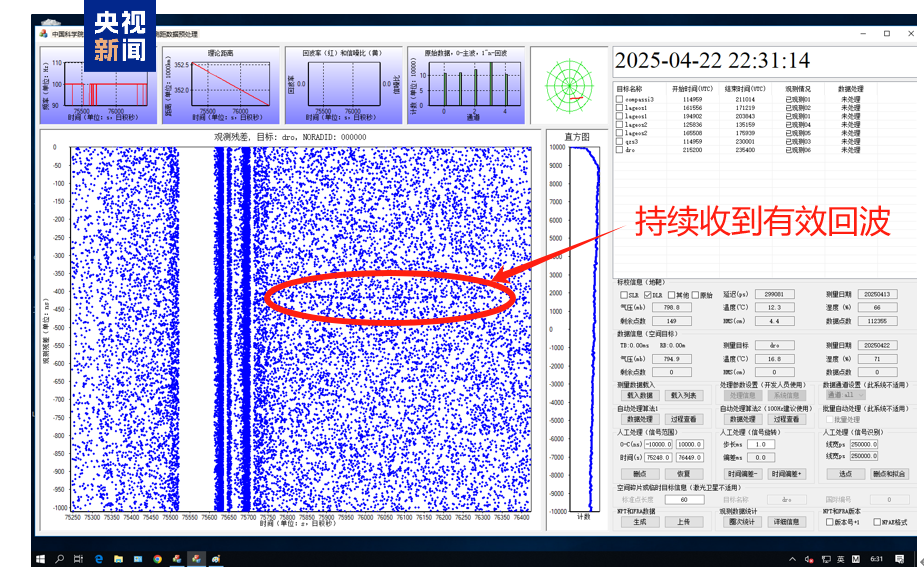
This reporter learned from the Space Application Engineering and Technology Center of the Chinese Academy of Sciences that recently (April 23), the Chinese Academy of Sciences' "Earth-Moon Space DRO Exploration Research" Class A pilot project successfully carried out a new technology experiment of satellite laser ranging at a distance of about 350,000 kilometers through the DRO-A satellite single-corner cone reflector and a 1.2m-aperture telescope ground laser ranging system. This is the first time that my country has achieved satellite laser ranging at the Earth-Moon distance scale.

Screenshot of the DRO-A satellite laser ranging echo signal
The satellite-borne reflector adopts a large-aperture single-angle cone design, and has overcome the micro-radian dihedral angle control, low-temperature difference mirror thermal control, and speed difference matching far-field diffraction design technology, maximizing the reflection capability. The ground-based laser ranging system successfully captured the laser echo photons reflected by the DRO-A satellite reflector by optimizing the telescope pointing accuracy and extremely weak signal recognition and processing technology. The relevant technology can support my country's high-precision satellite ranging and time difference measurement of the distance between the earth and the moon and even deep space.

Yunnan Observatory 1.2m telescope
This new technology experiment was organized and implemented by the Space Application Engineering and Technology Center of the Chinese Academy of Sciences. The Shanghai Astronomical Observatory was responsible for the development of the satellite-borne reflector, the Yunnan Astronomical Observatory was responsible for the development of the ground-based laser ranging system, and the Microsatellite Innovation Institute was responsible for the development of the satellite platform.

Single Cone Laser Corner Reflector
Subsequently, the research team will organize more astronomical observatories to participate in the observation, continue to improve the performance of the ranging system, optimize the design of the single-corner cone reflector, and further consolidate my country's technological advantages in the field of Earth-Lunar space exploration.